
There is a popular myth, longstanding in fact, and surely perpetrated by decades of Maple Leafs frustration that the Montreal Canadiens superiority from the early 1950's to the late 1970's was due to the simple notion that they had territorial rights to the province of Quebec's two greatest hockey talents annually.
The myth has gained ground on the factual truth in many minds based on the coincidental perceived removal of such rights and the Habs descent down to normalness since the heyday of the dynasty years.
But the myth, hockey fans, is complete bunk!
The small sliver of truth and fact behind the one time territorial Habs clause fails to back up the claims of those who have cried "No Fair" like whining children for years.
I first remember heading about this when I was all of seven years old.
The myth was cemented into young impressionable minds in hockey rinks and schoolyards Canada wide by Maple Leafs fans needing a convinient excuse in explaining their own clubs decline.
I grew up with kids who believed it then. I know some of them as adults who still believe it today.
The twisted yarn is so maligned, it even now includes the drafting of Guy Lafleur first overall in 1971, as well as others, as part of it's Leaf derived legend.
If the myth were true, the Canadiens would have also snapped up Jean Ratelle, Rod Gilbert, and Gil Perreault among others. The possibilities are endless - they would have likely never lost a game, nevermind the Stanley Cup.
Looking back on it all now, on how the mistruth spread, it's become clearer as to why it would permeate logic, given the finger pointing nature of Leafs fans, who have consistantly failed to look in their backyard to explain their failings and past inferiorities.
It's almost as if they agreed in unison that the myth would be their battlecry, their common shield of armour in the face of defeat. One day, somewhere in time, a little light went off in someones head. I can almost see it now.
"Well no wonder the cheaters won all them damn Cups, the Kweebeckers got the two best Frenchman every year..."
I've long known the truth is othewise, and have long sought out a source that would explain it best, with insightful completeness and perspective.
With much talk of Canadiens drafts in the past few days, the old territorial rights rule reared its famaliar head in chat room talk, when somebody posted a link to hockey historian and trivia expert Liam Maguire's site. As a Canadiens fan himself, Maguire has also been confronted with this myth numerous times, and sets the record straight. He has interviewed many on this very subject, including Sam Pollock, Scotty Bowman, Dick Irvin, Marcel Pronovost, Rod Gilbert, Yvan Cournoyer and numerous others.
It seems the origin of the rule is as old as the NHL itself, going back to wartime days when the fortunes and faith of franchises fluctuated annually.

Contrary to popular belief, the NHL did not start out as an Original Six league. Many teams came and went, existing anywhere between two or three years up to a decade, including the original Ottawa Senators.
Not unlike today's revenue sharing programs amongst sports teams, league members back in the day, found creative ways to assist in each other in the help for financial survival. Often this was done by way of player and monetary loans, but what team owners discovered back then was that locals stars filled seats to great capacity.
This fact was evident even in pre-NHL days, and especially true in Montreal, where a rivalry was built up to fullfill a demand for a french team to compete against the english Montreal teams of the day, the Wanderers and Maroons.
One year after the birth of the Montreal Canadiens, known then as Le Club Athletic Canadiens, it was decided that this would become the franchise that would cater to the desires of the french speaking clientele. Slowly but surely it filled it's roster with french names and proceeded to become semi-successful on the ice, but teetering financially off it.
Over time, the Canadiens became the only Montreal franchise remaining, outliving the Maroons and winning Stanley Cups in 1916, 1924, 1930, and 1931. It fought on through hard times and financial up and downs, and during a spell in the late 1930's, the team was on the brink of folding.
It was around that time, that the idea came up to offer the Canadiens the exclusive rights to two players per year as a means of maintaining interest and ensuring financial success.

To quote Liam Maguire, "(It was) decided that the Montreal Canadiens could take any two players from the province of Quebec in a special draft. There was one rider however. None of these players could have already been previously signed to a C form (confirmation form) with any other club."
"At this time in the NHL and right through the late 60's amateur players were signed by NHL teams to C forms and then placed on their appropriate junior clubs or minor pro clubs depending on their age. The most extreme case of this was Bobby Orr. Orr signed a C form three weeks before his 12th birthday with the Boston Bruins. He was so young his parents signature was required. When he turned 14 he began playing for Boston's junior sponsored team, the Oshawa Generals. That's how Orr became a Bruin."
"From 1936-1943 Montreal protected 14 players through this special draft. Unfortunately none of them ever played a minute in the NHL. Reason being, anybody who could tie their skates and chew gum at the same time were already long signed by other NHL teams including the Canadiens who certainly wern't going to survive solely with this rule."
"The hope was that there would be a spark from signing a French Canadian kid, even better if he could play a bit. The thought was that this could help attendance and thereby help Montreal.
It never did. What really helped Montreal at that time were two shrewd moves. One, a trade with the Montreal Maroons which brought them Toe Blake and two, the signing of Elmer Lach to a C form, who was from Saskatchewan by the way. He was signed after the Rangers passed on him. Lach attended their camp first."

The root of the myth may lie in the fact that just prior to the Habs landing Blake and Lach, the Canadiens first two stars were Edouard "Newsy" Lalonde and Aurel Joliat, both owners of French sounding names. Along Georges Vezina and the Cleghorn brothers, these two succeeding hero's, who were at one time traded for one another, were important facets of the Canadiens success in the 1920' and 1930's.
What many may not know, is that neither Lalonde or Joliat was a home grown talent. Lalonde was billingual, and was born in my hometown of Cornwall, Ontario (a great source of pride!), and Joliat was an Ottawa born player, of Swiss descent.
In the excellent book "Lions In Winter", by Chris Goyens and Allan Turowetz, Joliat comments on his being aquired from the Saskatoon Shieks for the popular Lalonde in 1922. As Habs fans were upset at seing a french speaking player leave, Joliat adds, "Still, it was easier for (GM Leo) Dandurand to trade for me than for a Dick Smith."
The Canadiens other big star of the time, possibly the first true superstar of hockey, Howie Morenz, also has a Swiss background.
Maguire further clarifies the myth's mystique by stating that the reasons the Habs survived the 1930's doldrums had nothing to do with the territorial rule, and everything to do with Lach and Blake working out brilliantly with a player the Habs didn't have in their future plans.

"The rest of the league passed on Montreal GM Tommy Gorman's offer of a trade for what seemed to be a very brittle but explosive goal scorer named Maurice Richard. Richard had suffered injury after injury in his first three years of pro. Gorman tried to unload him but nobody wanted him."
"Needless to say Richard's coming out party in 1943-44 and the subsequent effect he had on the game in the next 17 years has been well documented but suffice to say, these were the three major reasons (Lach, Blake, Richard) for the success of the Habs over a nearly two decade span - not some bullcrap rule that although was well intentioned did nothing to extend Montreal's stay in the NHL at that time. In fact they were even worse in 1940 than they were in 1936."
Bolstered by the "Punch Line", the Canadiens would win the Stanley Cup in 1944 and 1946, but Maguire states that there were two other pieces to the puzzle that would ensure Canadien supremacy for the coming decades.
"It happened in 1946 and 1947, respectively. With the French Canadian rule now rescinded and Montreal rolling with two Cup victories in a three year span something else was going to be needed for the franchise to rise to the extreme greatness they would see in a few short years."
To the distress of Maple Leafs fans, they unwittingly assisted the Canadiens a second time, and in similar fashion. The first had been the firing of coach Dick Irvin Sr. years earlier, who continued to be as successful with Montreal as he'd been with Chicago and Toronto.
"Toronto owner Conn Smythe fired Frank Selke Sr. and Montreal quickly hired him. Selke had a vision about a series of teams in the minor leagues that would be stocked with players that Montreal would sign to C forms. These minor league teams and the players on them were soon to be known as a farm system."
"This was the origin of the farm system as we know it today. It took the rest of the NHL 2-3 years to catch on to this idea but they did and they've all benefited from it but Montreal had a tremendous head start and in some instances they purchased the rights to an entire league to get a certain player."
"They did this for Jean Beliveau and Bobby Rousseau. In Beliveau's case it didn't matter because he told the Habs to get stuffed anyway. He was happy in Quebec and there were only two players in the NHL making more money than Jean who was in the QSHL. That was Rocket Richard and Gordie Howe. Finally Selke was able to sign Beliveau in 1953 when as he put it, " I opened up the vault and said help yourself Jean!" Great quote"
"The move in 1947 was the hiring of Sam Pollock. Pollock came under the tutelage of Selke and finally in 1963 became his successor as GM of the Canadiens."
"In 1963 the NHL finally realized there were a glut of players, post second World War 2 births, that were coming of age to play in the NHL and even with the C form system, stones were being left unturned. For the first time a draft was implemented. There was never any thought that this would one day become the life blood of the NHL."
"In 1963 the NHL finally realized there were a glut of players, post second World War 2 births, that were coming of age to play in the NHL and even with the C form system, stones were being left unturned. For the first time a draft was implemented. There was never any thought that this would one day become the life blood of the NHL."
"At the time the six NHL teams would draft in a rotating order any player who had not signed a C form. Ken Dryden was a draft pick of the Boston Bruins. Boston traded Dryden to Montreal."
"In 1963, the French Canadian rule was brought back for the Montreal Canadiens. It was not necessary, no question about it but Selke and Pollock worked a sweet deal and got it back on the books however the same rules applied. The player could not have signed a C form with any other team."
"From 1963-1967 none of the players Montreal selected played one minute in the NHL, ever. Finally in 1968, they drafted their first live one. A goalie named Michel Plasse."

"In 1969, it was determined that this would be the final year of the draft in this manner and the sponsorship of Junior A teams would cease to be. All players were to be 20 years of age or older and they would be eligible for a Universal Amateur Draft."
"Montreal was given one final kick at the French Canadian can and they made the most of it by selecting Rejean Houle and Marc Tardif. That was it for the French rule."

"By then Sam Pollock or Trader Sam as he was known, was working magic year in and year out on draft day and by flipping players in Montreal's farm system that had been so expertly set up years before by Selke and ran by Pollock, for draft picks. Players like Guy Lafleur, Steve Shutt, Mario Tremblay, several others, were selected with picks that Pollock acquired through trades."
This should clear up any misconception about this long believed fallacy, born primarily by frustrated anti-Montreal fans who for decades suffered through parade after Stanley Cup parade.




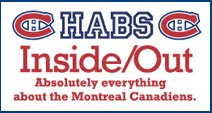





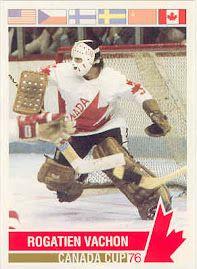
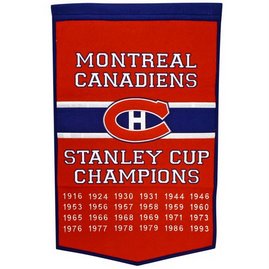







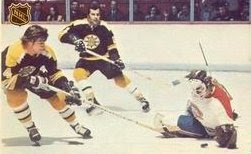



















































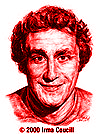



































































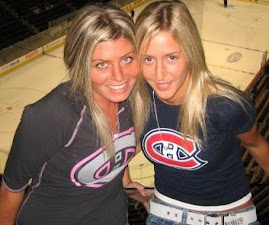


















9 comments:
Yes, I remember that the rule about the Habs getting the first two Quebec players was rescinded right away after the supposedly two best players -- Houle and Tardiff went to the Habs.
That's not exactly how it went, Houle and Tardiff were chosen after it was agreed to rescind the privelege.
The Canadiens used the picks that season, as opposed to other years where they declined it, simply to add bodies to the roster. Had they not used them, they likely would have been able to pick up either of those picks later in the first round.
There were better players in Quebec at the time, namely Michel Briere and Gilles Gilbert, but the Canadiens went with a pair of players from their own junior club. They goofed pretty bad here, in hindsight. althought they needn't add another goalie to the 6 or 7 already belonging to them at the time.
The perception that Houle and Tardiff looked so attractive at the time, was the doing of their centerman on the Junior Canadiens, Gilbert Perreault. It is possible, but I somehow doubt it, that the Canadiens were to try to pull a coup and swing a deal for Perreault the following year, and reunite the line in Montreal one day.
Houle and Tardiff didn't seem to be held in high regard by the Canadiens.They merely became part time players on the Habs for two seasons before jumping to what they felt were greener pastures in the WHA. No one ever missed them on the ice.
Houle, of course, would later become infamous as the dufus who would trade away Patrick Roy.
Speaking of myths that need debunking can we please stop perpetrating the outright lie that Leaf fans don't hold their management accountable or don't recognize that the club's problems start at home?
We don't quit supporting the team like the rest of the bandwagon fans in Canada (save the Habs) but we recognize where the problems lie.
Not enough Leafs fans hold their management accountable and filling the seats might actually hurt. Possibly when ticket demand takes a dip, it could be a good thing.
At present it seems Leafs upper management doesn't even hold lower management accountable.
As far as perpetrating the myth goes, I speak to it daily, in abundance. It saddens me to see how many stick up for the wrongdoings of the team and fail to see history repeating itself. As long as that faction votes with rear ends in the seats, little may change.
The Habs have gone 14 years without a cup and haven't iced a team that could even conceivably compete. Their only series wins have come on the back of otherworld goaltending.
I assume that you'll be advocating that Habs fans stop attending games at the Bell Centre?
No, because supporting your team is part and parcel of being a fan. I find that most people that defend the Leafs to fans of other teams just don't want to admit to them that they have issues.
I know that I'll never admit to a Habs/sens/Canadian team's fans that I hate anything about the Leafs just like they won't do the same to me. But in a group of Leaf fans it's a different story.
But players get booed, call in shows get complaints, and people do stop being fans. There are just so many Leaf fans that you don't notice the defections.
I remember the roster of the "Flying Frenchmen" who won an unprecedented 5 Stanley Cups in a row during the late 50s.
Roster that included Doug Harvey, Dickie Moore, Eddie Mazur, Calum MacKay, Tom Johnson, Bert Olmstead, Floyd Curry,Bob Turner, Jackie LeClair, Connie Broden, Don Marshall, Ab McDonald, Ken Mosdell, Bill Hicke, Ralph Backstrom - (Head Coach: Toe Blake/General Manager Frank Selke Sr.).
The "Flying Frenchmen" - YEAH RIGHT!
There were Flying Frenchmen among them, but they never made up the majority of the team. There's a whole other truth beyond the Rocket/Beliveau/Lafleur threadline as you pointed out.
HABS INSIDE/OUT and their fans debunk Territorial Rights ever happened. That is revising history and is a disgrace. Montreal,s last dynasty ended in 1979, a carry over of this unfair practice. Since 1980, TWO CUPS The numbers dont lie. Just your team.
Do some reading buddy. Tell me which players came to the Canadiens via territorial rights other than Tardif, Houle and Plasse. I challenge you to name them!
All of the original 6 teams had areas of protection to sign players to C Forms until age 14 back in the day.
What made the Canadiens so strong bewteen the 1950's and 1970's was GM's Gorman, Selke and Pollock
running a minor league system sponsoring teams full of players signed to the Canadiens. They bred the players and developed them into NHLer's.
But that's all probably too much truth for you to handle. Still, I'm daring you to name one player other than those I named that became property of the Habs via the territorial right rule.
Just one?
Post a Comment